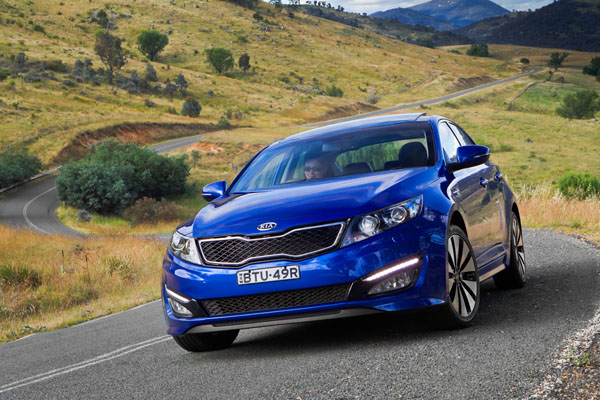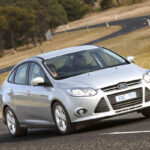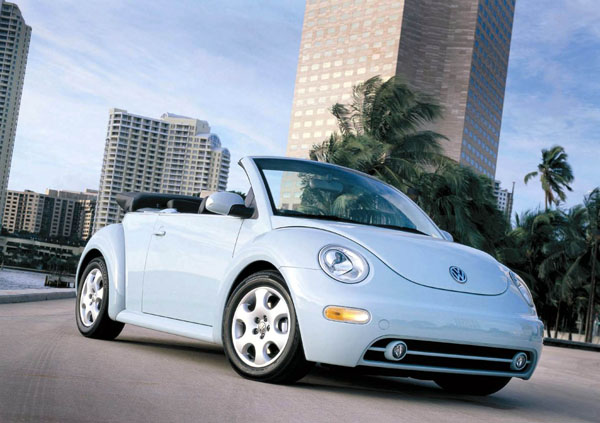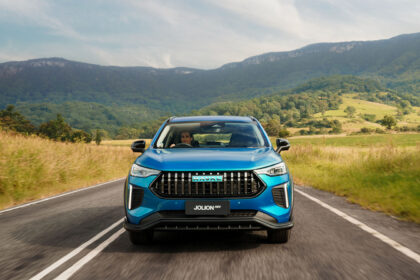Kia has expanded rapidly in Australia in recent years to such an extent that it has now stepped out of the shadow of Hyundai and is seriously considered a significant brand in its own right. High scores in build quality and customer satisfaction have played their part but the introduction of Kia’s seven year / unlimited distance warranty in 2014 is probably the biggest factor of all.
Kia’s Optima is a medium-large four-door sedan and was often chosen by those downsizing from a Commodore of Falcon because the kids have left home. There’s room for four adults, usually with little need to compromise on legroom. The new generation of November 2015 was larger and had even better space in the back seats.
A deep boot can swallow plenty of luggage the depth created by the use of front-wheel drive as there’s no differential underneath it. Which comes as a pleasant surprise to those moving from one of the big Aussie sixes. A handy feature is that the 60:40 rear seat backs can be dropped. The 2015 model had an even larger boot than the superseded car.
Kia Australia was early in getting into local suspension tuning carried out and it handle handles pretty well for what it is – that is, a family sedan.
Large alloy wheels and lowish profile tyres can be harsh on some rough roads and coarse-chip surfaces may create quite a bit of tyre noise. The lower cost models often have more sensible tyres than so are likely to be more comfortable. Try for yourself on roads you will be travelling on.
Power from most Kia Optimas comes form a 2.4-litre four-cylinder engine. Performance is good without being exciting as the Optima doesn’t pretend to be a sports sedan market.
Kia surprised us with the introduction of an Optima GT grand tourer with the launch of the new generation model range in November 2015. It has a 2.0-litre four-cylinder turbo-petrol engine, putting out 180 kW of power and 350 Nm of torque. At almost $10,000 more than the standard car (new) it was pretty expensive, but we’ve seen quite a few on the road.
All Kia Optimas sold in Australia have a six-speed automatic transmission with manual overrides and a Sport mode. There’s no full-manual gearbox as Australian drivers in this class have pretty well given up on DIY gearchanges.
Most Kia dealers are in the major cities, but some country cities and big towns are getting into the Kia act as well. Obviously, make your own enquiries.
Servicing costs are about average for Optima’s class and we have heard of no real complaints about availability and pricing of spare parts.
There used to be differences of opinion about insurance costs from the major companies, but this seems to be settling and premiums on the Optima are coming closer to one another.
It’s always worth shopping around, but keep in mind that it’s smart to have a long history with a company if you do have a crash. As usual, make sure you’re comparing like with like when shopping for insurance.
WHAT TO LOOK FOR
Quality control problems bugged Kia in its early days but Optimas being reviewed here are pretty impressive in their build. It’s still best to call on a professional for the final inspection.
Take it for a drive on a rough road and listen for squeaks and rattles.
Look at the condition of the interior for signs of sun fading on the exposed areas. Also for cracks and damage, particularly in the back seats, due to rough treatment by bored kids.
Similarly, check out the condition of the boot in case things have been roughly shoved in and / or the car has been thumped around bends.
The engines should start within a second or so even when stone cold. Do this after an overnight stop if this can be arranged with the owner.
Gear changes should be all but impossible to feel unless the Optima is being driven really hard. Slurred changes may be cause for concern.
CAR BUYING TIP
Unless you have multiple automotive trade qualifications it’s still wise to have a professional inspection.














